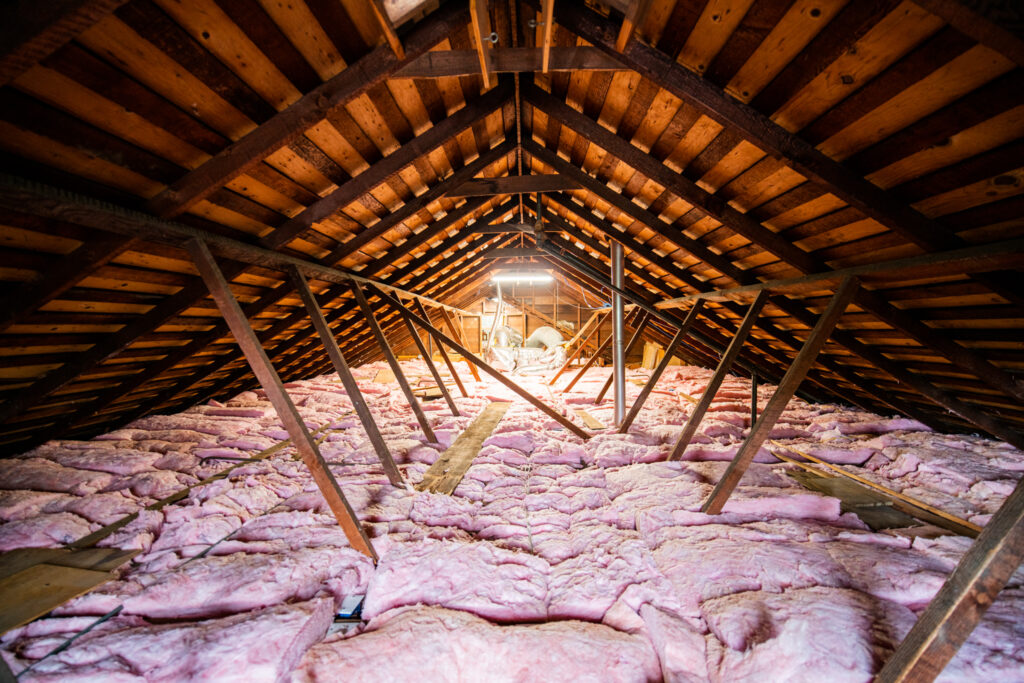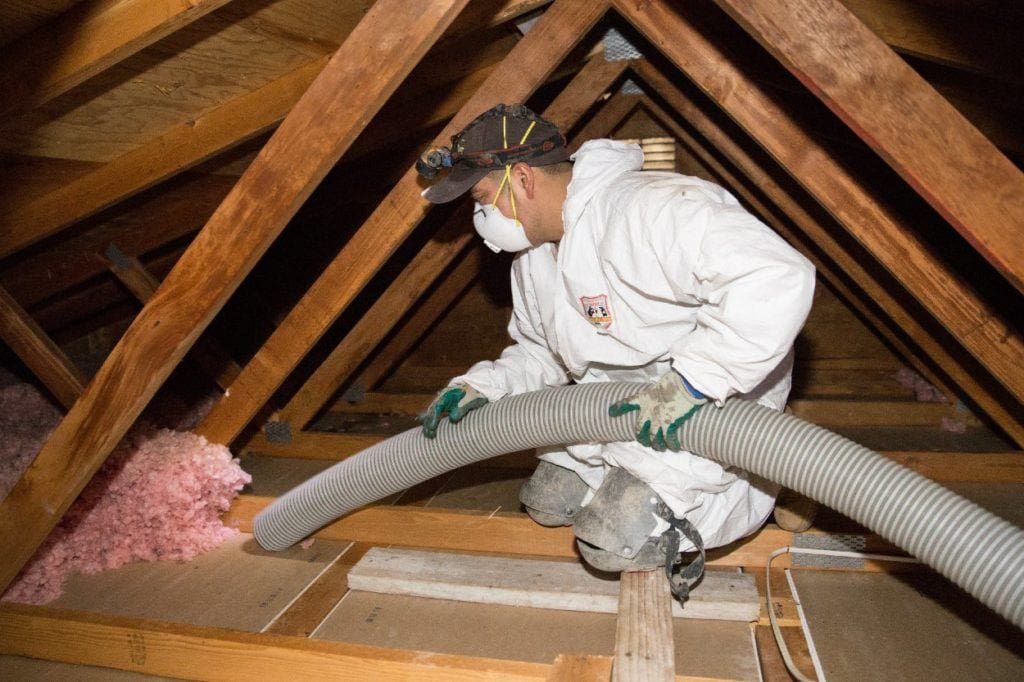Top Advantages of Upgrading Attic Insulation DFW for Your Home Convenience
Discover the Different Kinds of Attic Insulation and Their One-of-a-kind Benefits for Your Home's Power Effectiveness

Fiberglass Insulation
Fiberglass insulation is one of the most generally made use of products for attic insulation because of its superb thermal performance and cost-effectiveness. Made up of little glass fibers, this product efficiently traps air, developing an insulating barrier that aids keep regular interior temperatures. Its high R-value per inch makes it particularly effective at withstanding warmth transfer, which is crucial for energy preservation in homes.
Installment of fiberglass insulation is fairly straightforward, typically readily available in batts or loose-fill types, accommodating different attic room configurations. Furthermore, it is resistant and non-combustible to dampness, lowering the threat of mold and mildew growth. This longevity adds to its long life, making fiberglass a viable long-lasting financial investment for homeowners.
Furthermore, fiberglass insulation is commonly made from recycled materials, which boosts its eco-friendliness. The material can likewise contribute to soundproofing, lessening noise transfer in between spaces. While it is important to wear protective gear throughout installation to stay clear of inflammation from the fibers, the general benefits of fiberglass insulation, including power cost savings and environmental considerations, make it a popular option for boosting attic performance and promoting a comfy living atmosphere.
Spray Foam Insulation
Spray foam insulation is a highly efficient option for attic insulation, recognized for its remarkable air sealing and thermal efficiency. This ingenious insulation material is made up of a blend of isocyanate and polyol material, which, when combined, increases quickly to fill voids and dental caries in the attic room area. Its capacity to abide by numerous surface areas makes certain a continuous barrier against air leaks, substantially minimizing heat loss during cooler months and warmth gain throughout warmer seasons.
Among the key benefits of spray foam insulation is its high R-value per inch, which means it supplies outstanding thermal resistance in a relatively slim application. This is especially useful in attics where room is usually minimal. In addition, spray foam can assist decrease dampness build-up, decreasing the risk of mold and mildew and mildew growth, which can be damaging to both the structure and interior air quality.
While the first price of spray foam insulation might be greater than standard options, its long-lasting energy financial savings, combined with boosted comfort and enhanced home worth, make it a beneficial financial investment for property owners looking for boosted power effectiveness. Attic Insulation DFW. In general, spray foam insulation stands out as a reliable service for enhancing attic insulation
Cellulose Insulation

Cellulose insulation is a preferred option for attic insulation, mainly composed of recycled paper products treated with fire resistants. This eco-friendly option is understood for its superb thermal efficiency, successfully see here now reducing heat transfer in both summer and cold weather. The dense structure of cellulose permits it to fill up voids and gaps in attic rooms, giving a seamless obstacle against air leakages.
One of the substantial benefits of cellulose insulation is its capability to stand up to mold and pests, owing to the fire retardant treatments used during production. Additionally, it flaunts a high R-value per inch, which translates right into premium energy performance. Home owners can anticipate reduced home heating and cooling costs as an outcome of boosted insulation.
Installation is usually completed through blowing loose cellulose right into the preferred location, enabling for a fast and effective procedure. This technique likewise decreases interruption to the existing framework. Furthermore, cellulose insulation has a fairly low ecological effect, as its manufacturing procedure makes use of recycled materials, adding to lasting building techniques.
Rock Woollen Insulation
Amongst the numerous alternatives for attic room insulation, rock woollen, additionally referred to as mineral woollen, attracts attention as a result of its excellent thermal and acoustic performance. Made from all-natural or recycled products, rock wool is created by thawing rock and rotating it right into fibers, resulting in an item that supplies outstanding insulation homes.
One of the substantial advantages of rock wool insulation is its high R-value, which shows its performance in standing up to warm flow. This characteristic not just improves energy effectiveness but also contributes to maintaining a comfy interior temperature year-round. Additionally, rock wool is inherently fire-resistant, making it a more secure option for homes as it can stand up to high temperature levels without melting or launching toxic fumes.
Moreover, rock wool insulation excels in soundproofing capabilities, successfully decreasing noise transmission in between spaces and from outside resources. In general, rock woollen insulation provides a comprehensive option for enhancing energy performance, safety, and comfort in property settings.
Radiant Barrier Insulation
Glowing obstacle insulation works as an effective option for minimizing heat transfer in attic rooms, particularly in warmer environments. This kind of insulation jobs by mirroring glowing warm away from living rooms, consequently lowering the quantity of heat that gets in a home throughout heat - Attic Insulation DFW. Usually composed of a very reflective product, such as aluminum foil, radiant obstacles are set up in attics, encountering the roof covering, where they can obstruct incoming heat from the sunlight
The main advantage of radiant barrier insulation is its capacity to reduced cooling costs. By mirroring heat rather than absorbing it, glowing barriers can aid keep a much more stable indoor temperature, reducing the workload on air conditioning systems. This look at this site efficiency translates right pop over to this site into reduced power costs and raised convenience for homeowners.
Along with power cost savings, glowing obstacles can additionally add to boosted interior air top quality. By decreasing warmth build-up, they help lessen humidity degrees, which can protect against mold growth and boost general air flow. When installed correctly, glowing obstacle insulation can be an indispensable enhancement to any type of energy-efficient home, making it a deserving consideration for property owners seeking to improve their attic insulation technique.
Conclusion
In final thought, understanding the different types of attic insulation-- fiberglass, spray foam, cellulose, rock wool, and glowing obstacles-- allows property owners to make informed choices pertaining to power effectiveness. By selecting the appropriate insulation material, considerable decreases in energy expenses can be achieved, along with improvements in interior convenience.

In conclusion, recognizing the different types of attic room insulation-- fiberglass, spray foam, cellulose, rock wool, and glowing barriers-- enables home owners to make educated decisions concerning energy effectiveness.